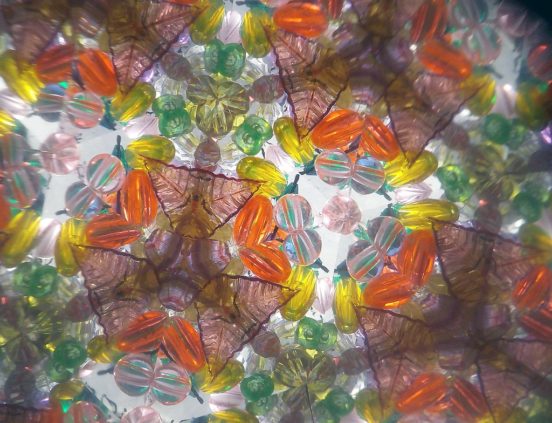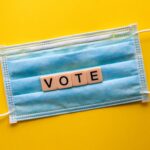The disproportionate impacts of Covid-19 on Black, Asian and minority ethnic (BAME) people in the UK (both within and outwith the medical professions) have sparked critical commentary, an evidence submission, and an official inquiry (headed by a ‘controversial’ figure largely discredited in antiracist, trade union and equality third sector circles).
While racial inequalities in England and Wales have been documented, the same for Scotland have yet to be revealed. Yet (with some exceptions, such as the evidence review), available analysis has often tended to homogenise ‘BME/BAME’ groups – either quantitatively or discursively. This homogenisation is, perhaps, an understandable response to a public health crisis which is exacerbating existing racial and ethnic inequalities, and in the form of grossly disproportionate mortality rates.
However, aggregation obscures the complexities of racism and how it is mutually constituted by other structural inequalities. There is thus a pressing need to disaggregate not only by specific ethnicity, but by intersections of other structural inequalities.
As intersectionality theory reveals, homogenising equality groups tends to privilege the advantaged within-groups: generalising across the category based on one particular position within it, effacing intersectional marginalisation in the process. Furthermore, the category BME/BAME can discursively de-gender women of colour. In the light of this, this article will reflect on the intersections of race and ethnicity with other inequalities, which we might bear in mind when reflecting on racial and ethnic inequalities and Covid-19, and which suggest possible directions for future research into inequalities and the pandemic. These intersections include disability, gender and gender identity, and sexual orientation, among other salient ones: class, nationality, migration status, and faith.
I do this with reference to claims made by equality third sector actors (organisations which have emerged because of inequality related to markers of identity, including racial justice, feminist, disability rights, and LGBTI rights organisations) in relation to other equality communities. These organisations play a key and at times overlooked role in policymaking, and an integral role in knowledge production about inequalities. Some of these other inequalities are more recently protected in equality legislation, and as such, data collection in relation to them is patchy or virtually non-existent (as is the case with trans status). Moreover, official statistics do not consistently examine all of these together. Therefore, we cannot gain a full understanding of the complexity of race, ethnicity and intersectional privilege and marginalisation in relation to the Covid-19 pandemic with reference to official statistics or existing research alone.
The ways in which these other structural inequalities intersect with institutional racism are not made explicit in these claims, so need to be further discerned – since the equality third sector remains largely siloed into ‘equality strands’, a situation which my research on intersectionality’s conceptualisation and operationalisation therein responded to. Claims from other equality sectors may also understandably employ strategic essentialism; in any case, these claims need not necessarily be understood as competing, in the knowledge that no inequalities are mutually exclusive (though of course all such claims can and should be subject to intersectional critique).
Disability
According to research by the Glasgow Disability Alliance, the largest disabled people’s membership organisation in Europe, COVID-19 has ‘supercharged’ inequalities already faced by disabled people. Disabled people, with BAME disabled people among them, already faced persistent isolation, poverty and exclusion from services, while the pandemic has led to increases in these factors as well as experiences of food insecurity.
According to disabled people’s organisations participating in my research, these experiences are particularly acute for BAME and other intersectionally marginalised disabled people. This intersection of race, disability and socioeconomic status is particularly significant given the correlations observed between markers of socioeconomic status, particularly deprivation, and vulnerability to COVID-19 in terms of both incidence and outcomes.
My research has found that UK-wide, BAME disabled people’s organisations have been particularly hard hit by cuts associated with austerity, with many such organisations who specifically advocated by and for disabled BAME people now dissolved.
Gender
Early research into gender differences and COVID-19 shows that proportionally more men than women die, while women of most minority ethnic groups are more likely to do so than white women, with Black women 4.3 times more likely. Research into other health indicators in the UK has found that BAME people are disproportionately diagnosed and treated at late stages, with particularly negative effects for women. One possible contributing factor to these differentials is ‘medical bias’, which has been named as a likely factor in racial inequalities in deaths from COVID-19 in the US.
Increasing incidence of domestic violence is a key gendered issue in relation to the pandemic. Commentary concerning this has largely been happening in parallel to, rather than with and through, commentary about racial and ethnic inequalities, in a familiar siloing which serves to marginalise the experiences and perspectives of women of colour, what Kimberlé Crenshaw named as political intersectionality (1991) in her still very relevant critiques of antiracist and feminist movements.
Specialised domestic violence services led by and for BAME women were already grossly underfunded compared with mainstream counterparts, and it is unclear how much, if any, of new funding committed for domestic violence services in the light of the pandemic will reach these services.
Sexual orientation and gender identity
The gendered implications of lockdown and proximity to abusive partners, with fewer options to leave have been highlighted. Yet the framing of domestic violence as an issue exclusively manifested in (heterosexual) intimate partner relationships or towards children in those contexts, has always served to mask (gendered), hetero/cissexist domestic violence and abuse experienced by lesbian, gay, bisexual and trans people from parents and family members (LGBT people may of course also be subject to domestic violence in intimate partner relationships).
This is an issue pertinent to all LGBT people, not just BAME LGBT people, but research indicates that the latter are underserved by LGBT specific services, access to which is even more limited for all in the current circumstances, even as many LGBT organisations report increased demand. Many LGBT people then, who may also be more likely to have ways of organising familial relationships which diverge from the (nuclear) ‘household’ which the lockdown policy is structured around, will have particularly challenging experiences of lockdown.
LGBT people experience health inequalities which may increase risk in relation to COVID-19. Furthermore, pre-existing health inequalities among LGBT people would suggest that vulnerability to COVID-19 may be particularly acute for BAME and other intersectionally marginalised LGBT people.
I have highlighted just a few issues which emerge when the intersections of race and ethnicity with disability, gender and gender identity, and sexual orientation are considered in relation to inequalities and COVID-19. The groups of BAME disabled and LGBT people, and BAME women and men, all overlap, and experiences vary further by specific ethnicity. In a context where equality claims making remains largely siloed, and attention to intersectionality is fragmentary at best, it remains to be seen whether the pandemic will exacerbate the homogenising tendency of these claims, or whether analysis might take care to highlight intersectional marginalisation among BAME people and within equality groups.
This article was originally published by Discover Society: https://discoversociety.org/2020/05/15/race-intersectionality-and-covid-19/
Ashlee Christoffersen is a PhD Candidate in Social policy at the University of Edinburgh and a former practitioner in the equality third sector. @ashlee_m_c
Reference
Crenshaw, Kimberlé Williams. 1991. “Mapping the Margins: Intersectionality, Identity Politics, and Violence against Women of Colour.” Stanford Law Review 43 (6): 1241–99.










Comments by Ritti Soncco